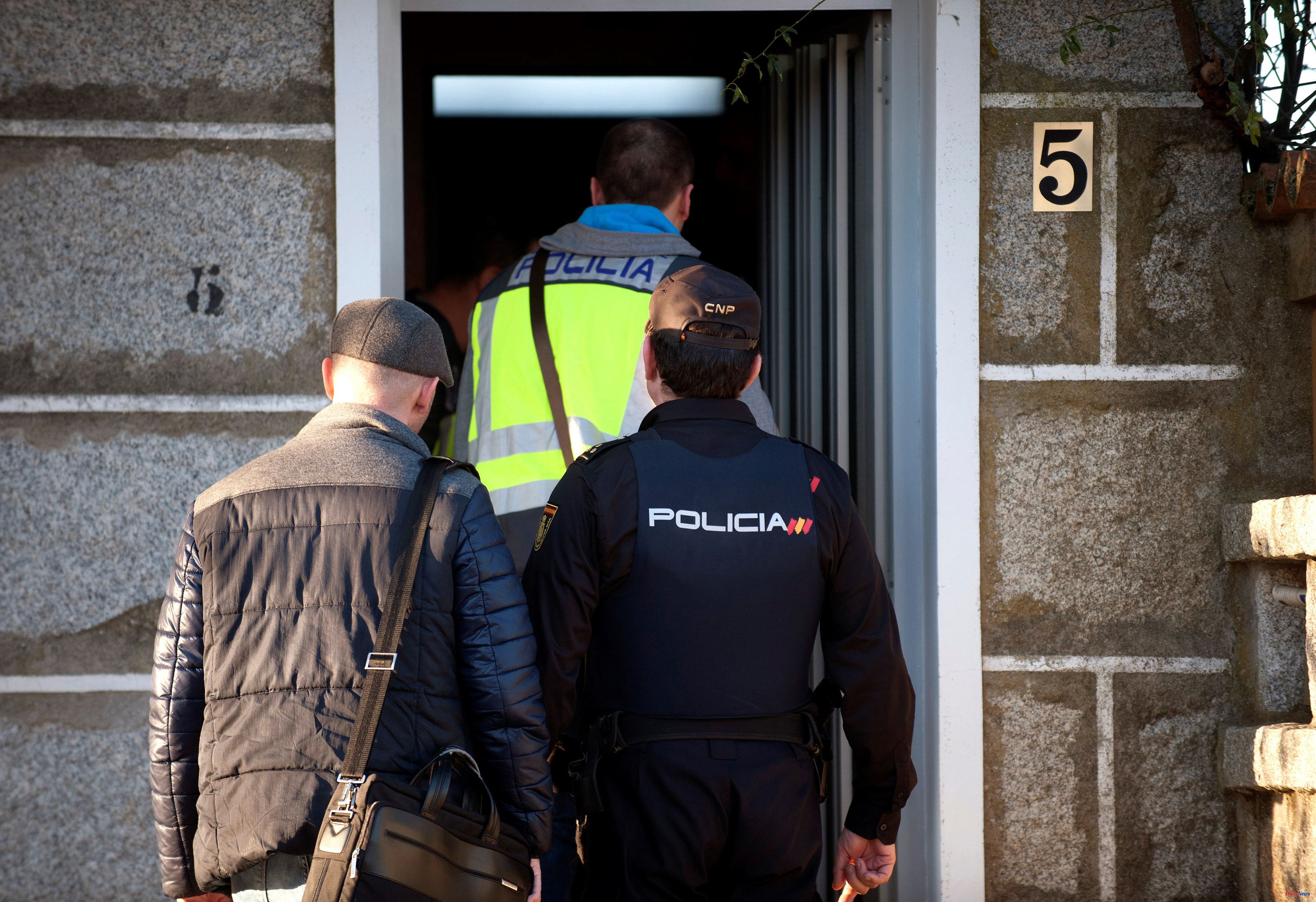A popular jury will have in its hands to solve one of the most surprising crimes that are remembered in Galicia and decide the future of the twins Roy and Bernardo D.L., who came to assume relevant positions in the National Police Station of Ourense and ended up splashed for a history of blood and police corruption. The investigating magistrate has concluded the investigation and considers that the two brothers could be the perpetrators of a crime of murder or manslaughter and robbery with force and that they should be tried by a jury.
The story began in 2014. Between the end of that year and February 2015, someone evaded the security of the bunker of the Ourense Police Station and took six weapons. Shortly after, anonymous letters sent first to internal affairs and then to the media aired the serious event and focused on an alleged plot that police officers from the narcotics unit would have hatched to buy the favors of alleged confidants around the world with official weapons. of drug trafficking
The open internal affairs investigation was prosecuted and splashed 13 police officers who would later end either with the case filed or acquitted. With the tsunami of that corruption case still open, in 2016, police officer Celso Blanco appeared shot to death in his office on the fifth floor of the judicial headquarters with one of the stolen weapons. Next to the body were three of the six stolen weapons and, just before allegedly taking his own life, he accused himself by email and WhatsApp messages of the theft and anonymously.
As a result of the judicial investigation, the magistrate of the Investigating Court number 3 of Ourense, Eva Armesto, has concluded that there are "multiple and unequivocal" indications that both agents, "jointly and plannedly", removed the six weapons from inside from the police station bunker and, when they were being investigated for it, with the aim of achieving impunity, "they made use of one of them to shoot their partner in the head, attributing to him the sending of anonymous letters and the theft of the weapons". For these facts they were arrested in 2018 and since then they have been appearing weekly before the court.
The order that orders the transformation of the actions into a procedure to be prosecuted by a Jury Court reports that the two investigated performed "important functions in the police station", but, when a new commissioner arrived, "they were displaced" by other colleagues policemen, were transferred from their work post and deprived of the use of the shooting range. According to the judge, "they felt undermined professionally" and tried to harm the colleagues with whom they had a rivalry and the managers who had withdrawn part of their duties.
As for the deceased, he was a friend of the twins, with whom he shared a passion for shooting. The judge considers that she knew about the plans of the twins, who created false traces of access to reserved data with the passwords of other police officers to harm them. His future was cut short in April 2016, when investigations into the theft of weapons targeted the two brothers. "Afraid that their partner would end up confessing, they prepared his death," says the magistrate, who sees evidence that on April 9, 2016, Bernardo shot his partner's head, who died immediately, while his brother was waiting for him. abroad. To avoid investigation, they tried to simulate a suicide by firing a single shot, placing the weapon on the hand of the deceased, under the pants.
The jury must determine whether, as the judge concludes, they manipulated the crime scene so that the police officers investigating the death found gunshot residue on the hand that fired the shot and sent an email from the deceased's email address claiming responsibility for the anonymous letters and the theft of the weapons and a message from his phone to a WhatsApp group "to make the authorities believe that his partner had decided to end his own life because he felt guilty about what happened."
The suspects did not count on the good work of their fellow police officers, who located their DNA on the paper with gunpowder that was located under the agent's lifeless body. In addition, they were careless and the case -part of the cartridge that contains the gunpowder charge- found next to the body and the gunpowder located under the body and in the deceased's sweater was brought to them, as they were identical to those found in their lockers. . They also located specific gunshot residue on the paper located under the victim's body and on the back of his sweater "in excess of the amount that corresponds to one shot."
They also did not stop to think about the fact that they left the slide of the weapon open and without a magazine under the body, a circumstance that, according to the expert reports, is not compatible with suicide, since "in the time that elapses from the shot until the pierces his head, no voluntary movement is possible". It is not possible to remove the magazine after death.
Blood spatter stains also appeared at the crime scene in the vicinity of the deceased's extremities, pointing to the intervention of a third person who made the mistake of over-cleaning the scene. Thus, in the office there were three of the stolen weapons and in two of them there was no DNA. According to the judge, "it lacks logic that there is no DNA from the victim if they were left by her once she had made the decision to kill herself and send a message acknowledging the abduction." He also sees "absolutely illogical and improbable" that he triggers himself because of the guilt of having committed acts in which he has not intervened, since the geolocation data of the deceased locates him "outside the places and times in which the accounts are created, the anonymous note or the first anonymous is sent".
According to the criteria of The Trust Project












